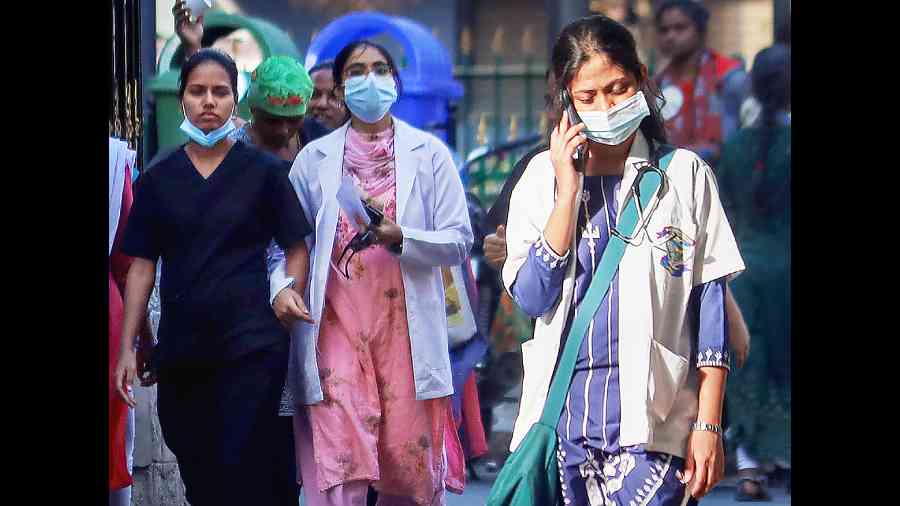A seasonal flu virus called H3N2 has dominated severe respiratory infections in India this year and caused two deaths, health authorities said on Friday, releasing surveillance data and urging the public to take precautions.
About half of all patients hospitalised for severe acute respiratory infections (SARI) or who sought outpatient doctors’ consultations for influenza-like illness (ILI) tested since January have been found with H3N2 infections, the Union health ministry said.
Karnataka and Haryana have confirmed one death each from H3N2, a subtype that appears to cause more hospitalisation than other influenza subtypes.
But health experts have asserted that available surveillance and viral genome sequencing data have not shown anything unusual this year.
About 10 per cent of hospitalised SARI patients with H3N2 have needed oxygen and 7 per cent have required intensive care treatment, the ministry said. Doctors who have tracked H3N2 in India over the past decade say children and the elderly are at greater risk of severe disease or mortality.
India witnesses two influenza peaks annually — from January to March and in the post-monsoon season. A nationwide surveillance network has documented 1,245 lab-confirmed H3N2 cases in January this year, 1,307 in February and 486 until March 9.
Cases linked to seasonal influenza are expected to decline from Marchend, the ministry said. “H3N2 is part of seasonal flu — it keeps coming and going,” said Nivedita Gupta, head of communicable diseases and epidemiology at the Indian Council of Medical Research (ICMR), the apex government research agency that coordinates flu virus surveillance and genome sequencing efforts.
“A subset of samples is routinely sequenced and matched with the global database. Our influenza strains have so far always matched the global sequence database. Nothing unusual has been noted,” Gupta said.
The ministry has, however, asked states to remain alert during the coming weeks. The ICMR has urged people to avoid crowded places, wear masks, cover the mouth and nose when coughing or sneezing, and avoid touching the eyes and nose.
Health experts say the two reported deaths do not provide any meaningful epidemiological information unless the “denominator” — the total count of H3N2 patients — is also known.
“The denominator remains unavailable because the vast majority of patients with influenza, including those with H3N2, would not have their infections subtyped,” said Anand Krishnan, a professor of community medicine at the All India Institute of Medical Sciences, New Delhi.
A study by Krishnan and his colleagues had estimated influenza-linked respiratory death rates from H3N2 during the period 2010-2013 — 4.3 per 100,000 population aged below five years, 0.3 per 100,000 population between five and 64 years, and 20.8 per 100,000 people aged 65 years or older.
The 2023 surveillance data show India had around 397,000 cases of ILI in January, 436,000 cases in February and 133,412 cases until March 9.
About 7,000 patients with SARI were hospitalised in January, 6,919 in February and 1,866 until March 9. Among 583 lab-confirmed influenza cases that were subtyped during the nine weeks from January 2 to March 5, 451 (77 per cent) were found to be H3N2.
The ministry said the anti-viral drug called oseltamivir recommended against influenza by the World Health Organisation is available free of cost through the public health system and has been available for sale only under prescription since February 2017.
The ministry said the NITI Aayog, the government’s think tank, will on Saturday hold an inter-ministerial meeting to review the seasonal influenza situation in the states and support them through management guidelines and treatment protocols.











